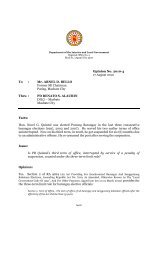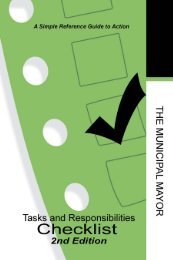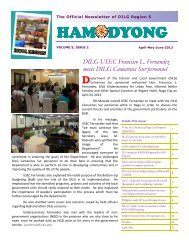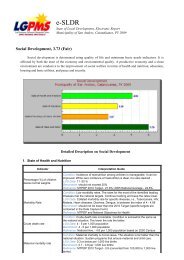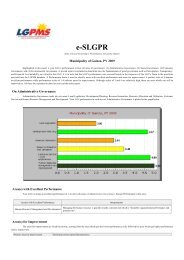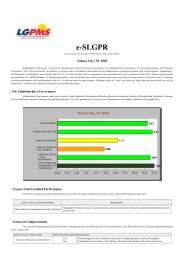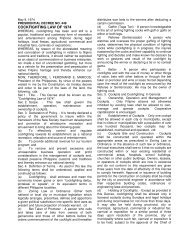A Guidebook on Capacity Development Agenda Formulation
A Guidebook on Capacity Development Agenda Formulation
A Guidebook on Capacity Development Agenda Formulation
Create successful ePaper yourself
Turn your PDF publications into a flip-book with our unique Google optimized e-Paper software.
38Step 3Undertake analysis of theidentified problemsUse <strong>on</strong>e or a combinati<strong>on</strong> oftools and processes in analyzingthe problem/s. The suggestedtools are Problem Tree Analysis,Fishb<strong>on</strong>e Analysis, Strength,Weaknesses, Opportunities andThreat (SWOT) Analysis,Alternative Analysis Approach,Participatory IssueIdentificati<strong>on</strong>, Pairwise RankingThe Problem Tree Analysis isdiscribed in the suggestedtool #1.Suggested Tool #1PROBLEM ANALYSISUsing “metacards,”list all problems. Onecard per problem.Formulate eachproblem as anegative c<strong>on</strong>diti<strong>on</strong>.The c<strong>on</strong>vergence pointfor all the problemsidentified is referredto as the “coreproblem” & becomestheoverriding c<strong>on</strong>cernthat will have to beaddressed.How to undertake Problem analysisSTEP 1Identify theproblemsSTEP 2Establish the cause andeffect relati<strong>on</strong>shipam<strong>on</strong>g the problemsidentifiedSTEP 3Establish ac<strong>on</strong>vergencepoint/sSTEP 4Review thediagram asa whole.From am<strong>on</strong>gthe listedproblems, try& agree <strong>on</strong>which is thecause &which is theeffect.Verify the cause andeffect relati<strong>on</strong>shipand agree <strong>on</strong> thesoundness andcompleteness of theproblem tree.See Illustrati<strong>on</strong> #3 for a sample of an actual case.




